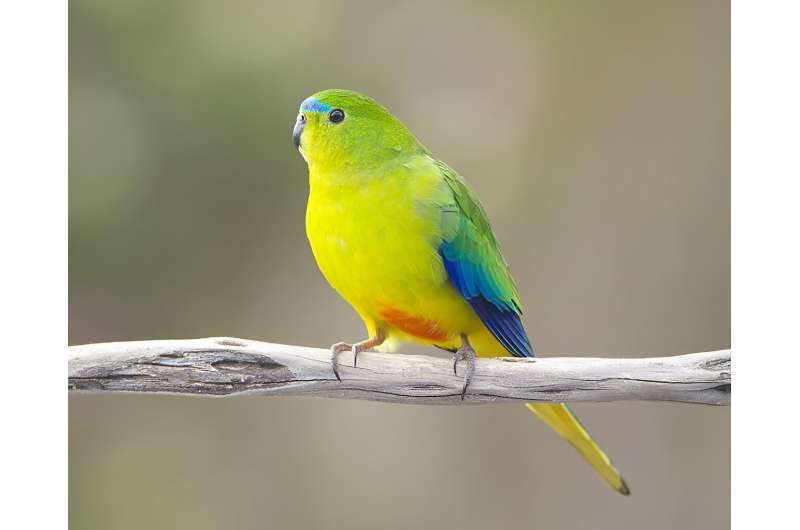This article has been reviewed according to Science X's editorial process and policies. Editors have highlighted the following attributes while ensuring the content's credibility:
fact-checked
trusted source
proofread
Rare Australian parrot faces multi-virus threat

A critically endangered parrot, with a population numbering as few as 70 in the wild, could be at further risk after being found to carry a half-dozen previously undetected viruses.
New research
from a team involving James Cook University Microbiologist and Senior Lecturer Dr. Subir Sarker identified 11 viruses being harbored between 40 captive-bred orange-bellied parrots in two different aviaries—with six of those viruses having not been discovered in the bird before. "The critically endangered orange-bellied parrot, with as few as 70 wild individuals, is a species at risk of extinction. Yet up until this point, little research has been conducted into their existing viral diversity," Dr. Sarker said. "From this study we identified a number of viral pathogens which we knew were already present in the orange-bellied parrot
The parrot breeds only in Tasmania during summer with most of the population migrating to coastal Victoria and South Australia for winter.
Dr. Sarker used next-generation sequencing technology to detect for viomes, which encompass all viruses present, in fecal samples taken in 2021 from captive-bred parrots housed at Zoos Victoria.
His team's analysis eventually identified 11 viruses belonging to the families Adenoviridae, Circoviridae, Parvoviridae and Picornaviridae.
Eight viruses were detected in Aviary 1 compared to only three viruses housed at Aviary 2.
"This parrot already faces numerous threats to its survival in the wild, including habitat loss, predation and small population impacts. Conservation of the wild orange-bellied parrot population is heavily reliant on using parrots from a managed captive breeding program," Dr. Sarker said.
Dr. Sarker said it was important to continue to study the species in order to understand whether the six new viruses detected were limited to captive-bred birds from one location and whether they could pose a risk to the wild population if those birds were released.
"It's now up to Zoos Victoria and conservation authorities, including the Orange-bellied Parrot National Recovery Team, to decide how they will manage this risk," he said.
"This is an area that we need more focus and more research funding to understand and protect these iconic birds in Australia."
The study is published in the journal Microbiology Spectrum.
More information: Natalie Klukowski et al, Virome of Australia's most endangered parrot in captivity evidenced of harboring hitherto unknown viruses, Microbiology Spectrum (2023). DOI: 10.1128/spectrum.03052-23
Provided by James Cook University





















